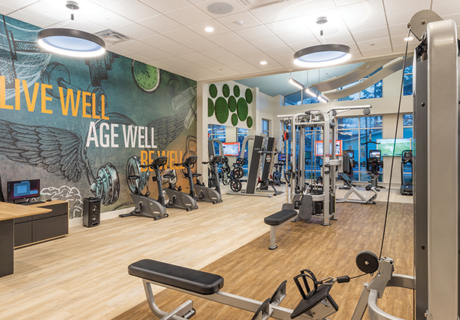2024 EFA Conference Preview: Breaking Down Stereotypes, Prejudices Of Affordable Senior Housing
The annual Environments for Aging Conference + Expo, held April 13-16 in Atlanta, will feature a variety of keynote and breakout sessions.
Environments for Aging is previewing some of the upcoming educational sessions in a series of Q+As with speakers, sharing what they plan to discuss and key takeaways they’ll offer attendees.
Session: “That’s Affordable Housing!”
Speakers: Vanessa Shumate, designer, American Structurepoint Inc.; Erik Cooper, vice president, Community Reinvestment Inc.
Affordable senior living communities are a growing need for seniors, while helping create equity and inclusion in communities. Speakers in this session will share the challenges and lessons learned on delivering two affordable assisted living/independent living campus projects—Glasswater Creek of Plainfield in Plainfield, Ill., and Glasswater Creek of Whitestown, in Whitestown, Ill. These two projects add a combined 232 affordable assisted living apartments to the Indianapolis area.
Attendees will also learn about materials selection and how to best impact residents’ health using sustainable and biophilic design strategies.
Environments for Aging: How are partnerships key to bringing more affordable senior living projects to market?

Erik Cooper (Image credit: Darren Cooper)
Erik Cooper: It takes a village to make a growth-minded community where everyone can thrive and when agencies such as the Indiana Housing & Community Development Authority and owners/developers work together, both the quality and quantity of affordable housing can be increased.
Partnerships are not limited to companies developing new campuses, however. Partnerships are inclusive of agencies that can assist not only with rent but with energy costs, like the Low Income Energy Assistance Program or funding linked to the Low-Income Housing Tax Credit (LIHTC) program.
What strategies can help promote synergies between affordable housing campuses and their surrounding communities?

Vanessa Shumate (Image credit: American Structurepoint, Inc.)
Vanessa Shumate: Creating spaces within an affordable senior living community that encourage overall community participation and integration is the first step. These spaces can vary from community rooms that can host multiple types of events to public gardens where residents, staff, and other members of the community can work together and be in nature.
Site selection and development are other factors for community integration because seniors should be able to visit outside of their campus as well as have visitors come to visit them. Walking trails with integrated lighting, seating, and landscaping can be an inexpensive way to connect with surrounding neighborhoods.
Designs like the Glasswater Creek communities that break down the walls of stereotypes and prejudices surrounding “affordable housing” are effective in drawing these neighborhoods into the community as well because we can build good-looking buildings on a budget.
How can equity in the built environment help support residents’ and staff members’ physical, mental, and psychological well-being?
Cooper: Equity ensures all members of a community have access to essential services, including affordable housing. When the cost of housing is reasonable, residents and staff can spend more of their energy and time resting, creating, and taking care of themselves.
Equity also creates a built environment that encourages social interaction, which combats loneliness and improves mental health. We all saw the damage loneliness can cause during the COVID-19 pandemic and are now developing ways to fight loneliness and improve inclusivity.
Developing communities that reflect the culture and heritage of its residents and staff promotes community cohesion and social identity, strengthening connections and encouraging contributions by all.
What’s one takeaway from your session that you hope attendees walk away with?
Shumate: The primary takeaway from our session is that we can create equitable communities that support residents. One of the things I delight in the most is creating a campus and then going back and seeing how the community is using it.
I recently performed a post-occupancy evaluation at Glasswater Creek of Plainfield and, while interviewing the residents and touring the campus, I heard many stories about how this community was the best they had ever lived in, including their individually owned homes.
To hear stories like these, it confirms our belief that we can make happy, healthy, and safe communities where life not only endures, but blossoms.
For more on the 2024 EFA Conference schedule and registration, visit environmentsforaging.com.




